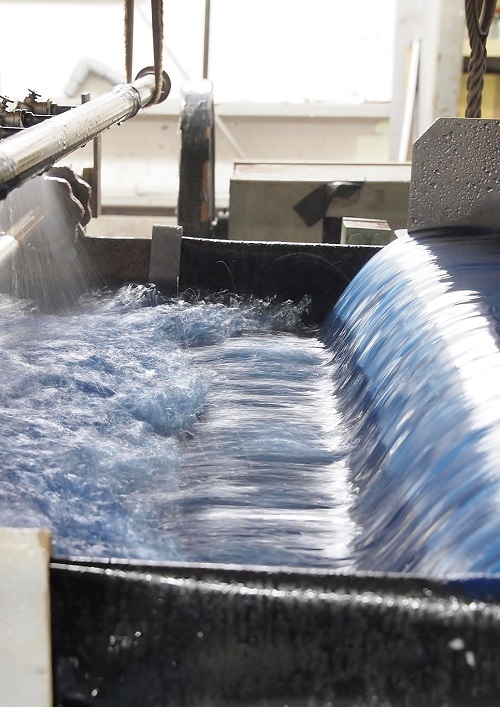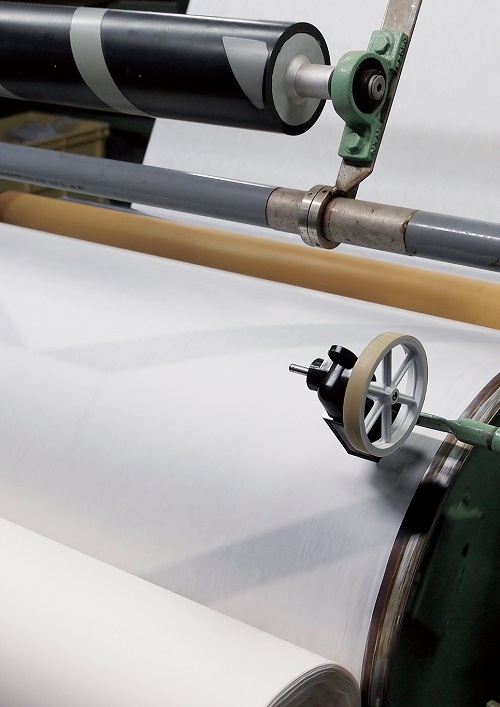Handmade washi is produced one sheet at a time, and skill and experience are required to make paper of consistent quality. The city of Mino is also home to a large paper industry, producing washi for use in commercial applications such as paper for shoji screens, lanterns, and even coffee filters and thread.
Making washi more cost-effective
Some washi artisans adopted machinery to produce washi more cost-effectively, and to compete with imported paper. Many of the processes of machine-made washi are automated versions of traditional techniques. The main material for kikaisuki washi (machine-made paper) is pulp including the bast fibers of plants such as kozo (paper mulberry), mitsumata (Edgeworthia chrysantha), and gampi (several shrubs of the genus Wikstroemia).
Processing the raw materials
A naginata beater is used to process the fibers. The long rotating blades pull the fibers apart rather than cutting it in short pieces, resulting in a strong product that is similar to handmade washi. A machine does the process of removing impurities from the fibers with a sieve-like screen. (Traditionally these impurities are picked out by hand.)
Making the paper
Another machine uses a large deckle, or frame, and mimics the side-to-side and back-and-forth scooping action of a human papermaker. The paper sheets are then compressed to remove excess water, passed through a drying machine, and cut to size.


